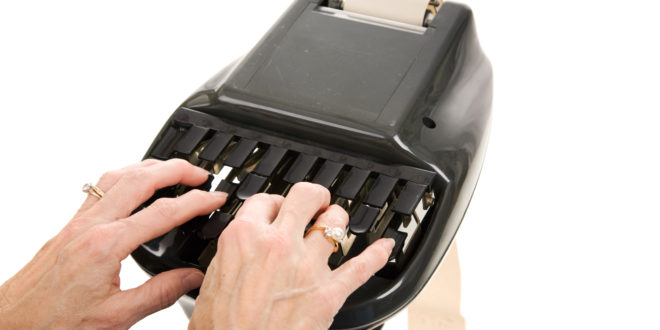
Stenography Typewriters: Revolutionizing the Courtroom and Beyond
In the fast-paced world of legal proceedings, accuracy and speed are of utmost importance. The ability to capture and transcribe spoken words in real-time has been a challenge for centuries. However, with the advent of stenography typewriters, this task has been revolutionized, transforming the courtroom and various other fields where accurate transcription is required.
Stenography is the art of shorthand writing, where a stenographer, also known as a court reporter, uses a stenotype machine to capture spoken words. These machines have played a vital role in courtrooms, capturing the spoken word of witnesses, attorneys, and judges. Stenography typewriters have greatly improved the efficiency and accuracy of court proceedings, allowing for an impeccable record of every word spoken.
The stenotype machine, used by stenographers, is a specialized typewriter-like device with multiple keys, each representing different sounds or combinations of sounds. These keys are depressed simultaneously to create a chord, rather than typing individual letters. This chord represents a word, phrase, or even an entire sentence. The machine also employs a specialized phonetic keyboard layout, which further speeds up the typing process. Stenography typewriters, therefore, enable the stenographer to capture speech in real-time, providing an accurate and prompt transcript of court proceedings.
The stenography typewriter has numerous benefits over traditional keyboards. Its chord-based input system allows for much faster typing speeds while minimizing unnecessary key presses. This increased speed and accuracy enable stenographers to capture speech verbatim, ensuring that no important details are missed or misunderstood. This is crucial in legal proceedings where every word holds immense significance. The real-time transcription feature also allows attorneys to instantly review, confirm, or challenge statements made during the trial, enhancing the overall efficiency of the courtroom proceedings.
Apart from the courtroom, stenography typewriters have found applications in various other areas where accurate and prompt transcription is essential. One such field is the medical industry. Stenographers equipped with stenotype machines are often deployed in medical settings to record patient consultations, surgical procedures, and medical lectures. The ability to provide real-time transcriptions in these scenarios ensures that no essential medical information is lost. It also helps in effectively documenting medical research, allowing medical professionals to review and analyze data faster.
Stenography typewriters are not limited to the legal and medical fields. They have become an invaluable tool in the field of closed captioning and subtitling in the media industry. With the rise of online video content, the demand for accurate and accessible subtitles has surged. Stenographers using stenotype machines can attend live broadcasts or pre-recorded programs, transcribing speech in real-time and providing accurate captions or subtitles. This ensures that individuals with hearing impairments can fully engage with the content while also improving accessibility for non-native speakers.
The advancements in technology have further enhanced the capabilities of stenography typewriters. Modern stenotype machines can be connected to personal computers or other devices, allowing for instant translation of stenographic codes into readable text. This integration of technology provides an efficient workflow, where the stenographer can review and edit their transcription before finalizing it. The use of specialized software also allows for automatic formatting, spell-checking, and searchability, simplifying the post-production process.
In conclusion, stenography typewriters have revolutionized the courtroom and various other fields where accurate and real-time transcription is crucial. They have improved the accuracy and efficiency of court proceedings, medical consultations, closed captioning, and subtitling. The ability to capture speech verbatim and provide instant transcriptions has become an integral part of these industries, ensuring a reliable record of spoken words. With continued advancements in technology, stenography typewriters will continue to play a vital role, further optimizing the process of capturing and transcribing spoken information.


















